Submitted Review
Alastair Mooney ‘Nest’
‘Long after humans are gone, nature will persevere.’
Entering the main gallery that houses Alastair Mooney’s exhibition, Nest, is a curious sensation: equal parts intimidating and whimsical.
The Queen Victoria Art Gallery’s main exhibition space, located immediately inside the entry, appears largely empty at first glance, but for a gigantic sea eagle perched proudly atop the rusted hulk of an old car, gripped savagely in its mighty talons.
This striking sentinel has an almost humorous quality to it, the scale of it bordering on ludicrous, yet it exudes an undeniable aura of pride and power. Its gaze almost daring you to enter and explore the other eight much smaller sculptures gathered around it, under its protection, among the elegant white columns of the gallery.
Interdisciplinary artist Mooney grew up at George Town in Tasmania’s north, and has always had a keen interest in the local bird life. Through this lens, Nest explores the impact of human civilisation on the planet – and what will come in its wake. And while Mooney’s commentary on the human impact on wildlife is quite clear, humanity only appears in his work in the form of the junk we leave behind.
And these are not images of victims of human impact, rather of nature transcending the worst that we can throw at it.
Nest is quite playful in its execution, with its sculptures of birds interacting with the detritus of human occupation. The birds are carved from Huon pine – itself an incredibly long-lived organism with a lifespan that can exceed 1000 years – with inlays of mother of pearl, and the craftsmanship imbues the birds with a remarkable level of personality.
There is keen attention to detail in unlikely places, like the realistic ring-pulls on empty beer cans, the scored texture of rebar steel, and bottles which really are hollow inside.
The sea eagle sculpture (Megahaliaeetus Dead Car) is a bold summary of the collection’s underlying theme: long after humans are gone, nature will persevere.
Sculpted in Huon pine and leather, the sea eagle poses on top of the old car like a hunter with freshly killed prey, victorious and fearless. Similarly, the other birds in the collection are not passive in their scenes, but are assuming a measure of control over the tainted environment left to them.
A cormorant dries its feathers while resting on an old tyre instead of a rock. Two finches peer curiously at you from a perch of rebar steel. An owl’s piercing gaze fixes on you from atop a discarded wine bottle. And a parrot uses its beak to pick at a “tree” of beer cans.
A pelican attempting to swallow a bill full of garbage (Pelecanus Empties) at first looks pitiable – a sadly familiar image of an animal choking on our waste. But at the same time it also has a sense of defiance or bravado to it, like someone downing a shot of tequila.
Even the sculpture of a little penguin poking its peak into a barrel of oil (Heavy Bunker Eudyptula) is a message of solidarity rather than one of condemnation. This piece is Mooney’s tribute to the army of volunteers who helped save Tasmanian birdlife in the wake of the Iron Baron oil spill near Low Head in 1995.
For all its imagery of environmental damage, there is something hopeful about Nest. While it is certainly a reminder of the impact we have on the world, it is also a cheeky warning that nature would not miss us for a moment if we vanished overnight.
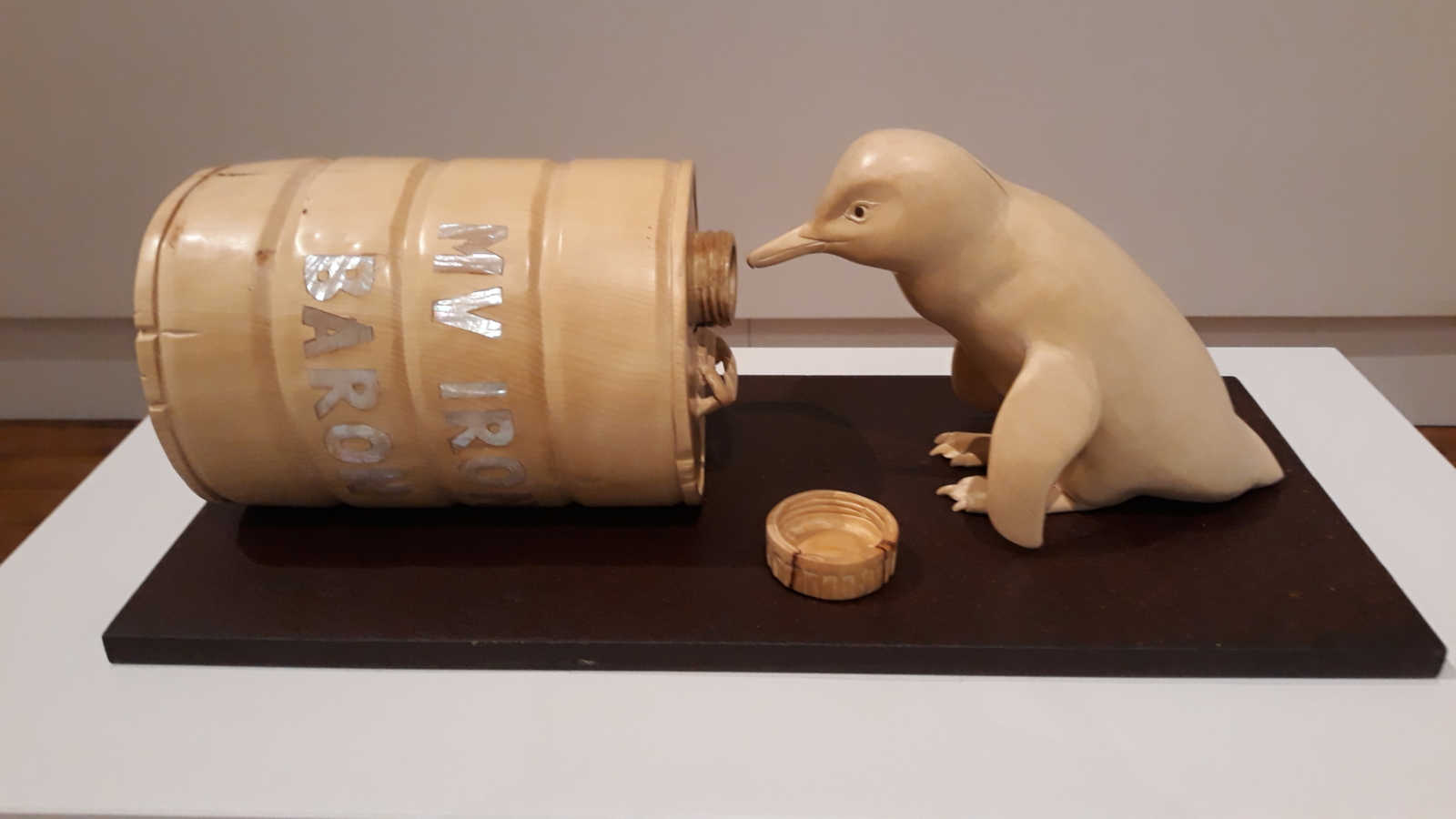
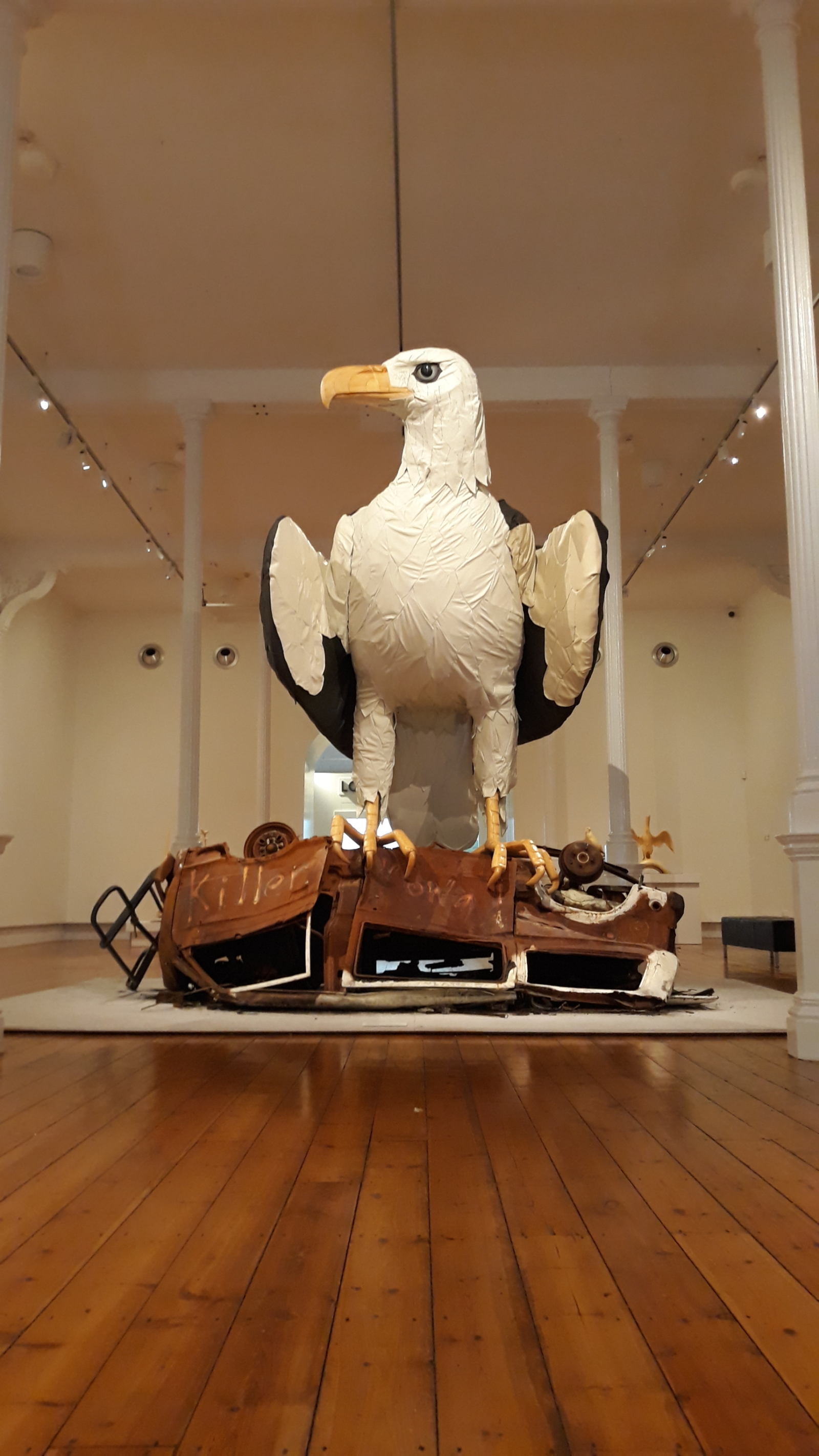
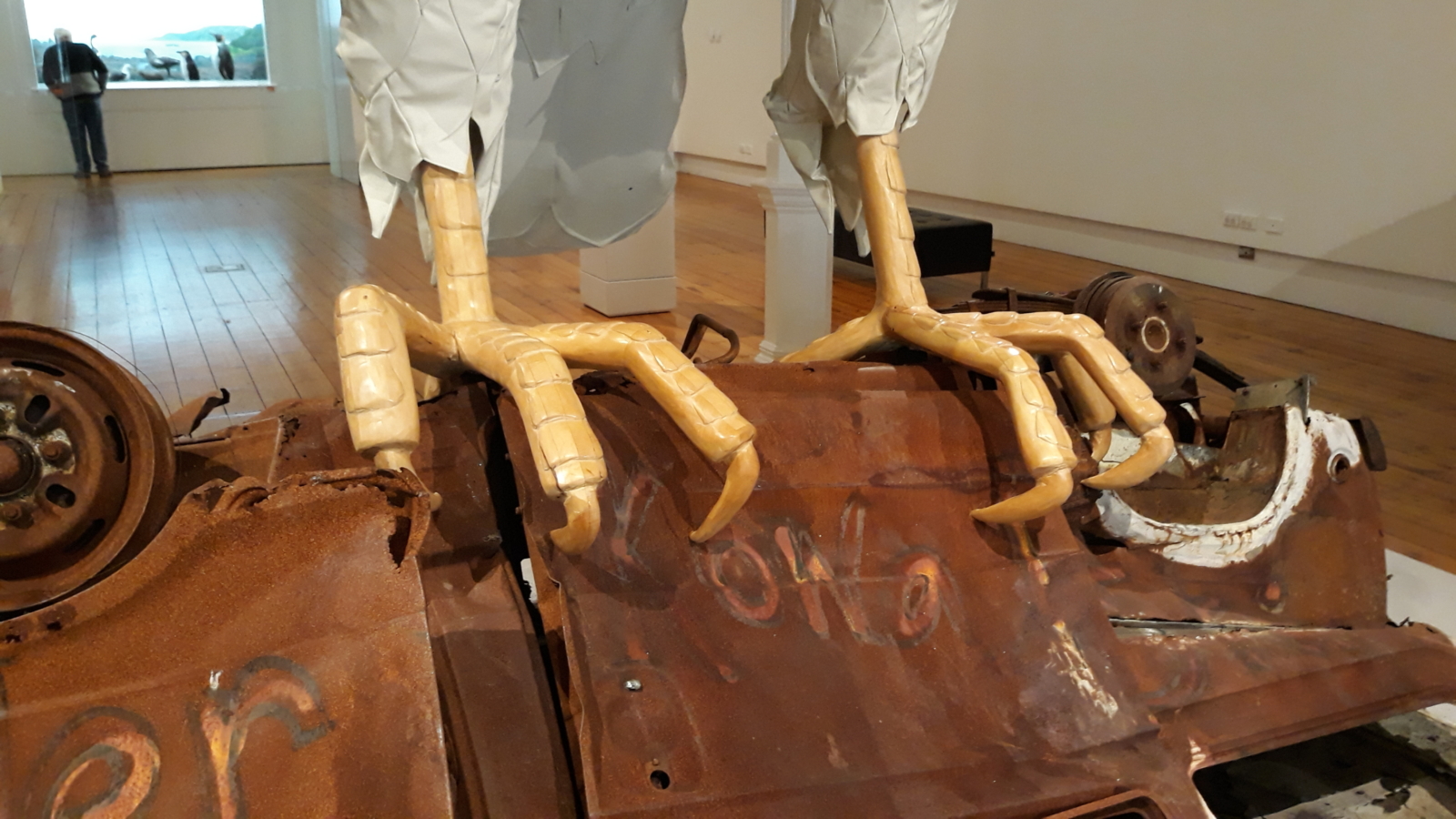
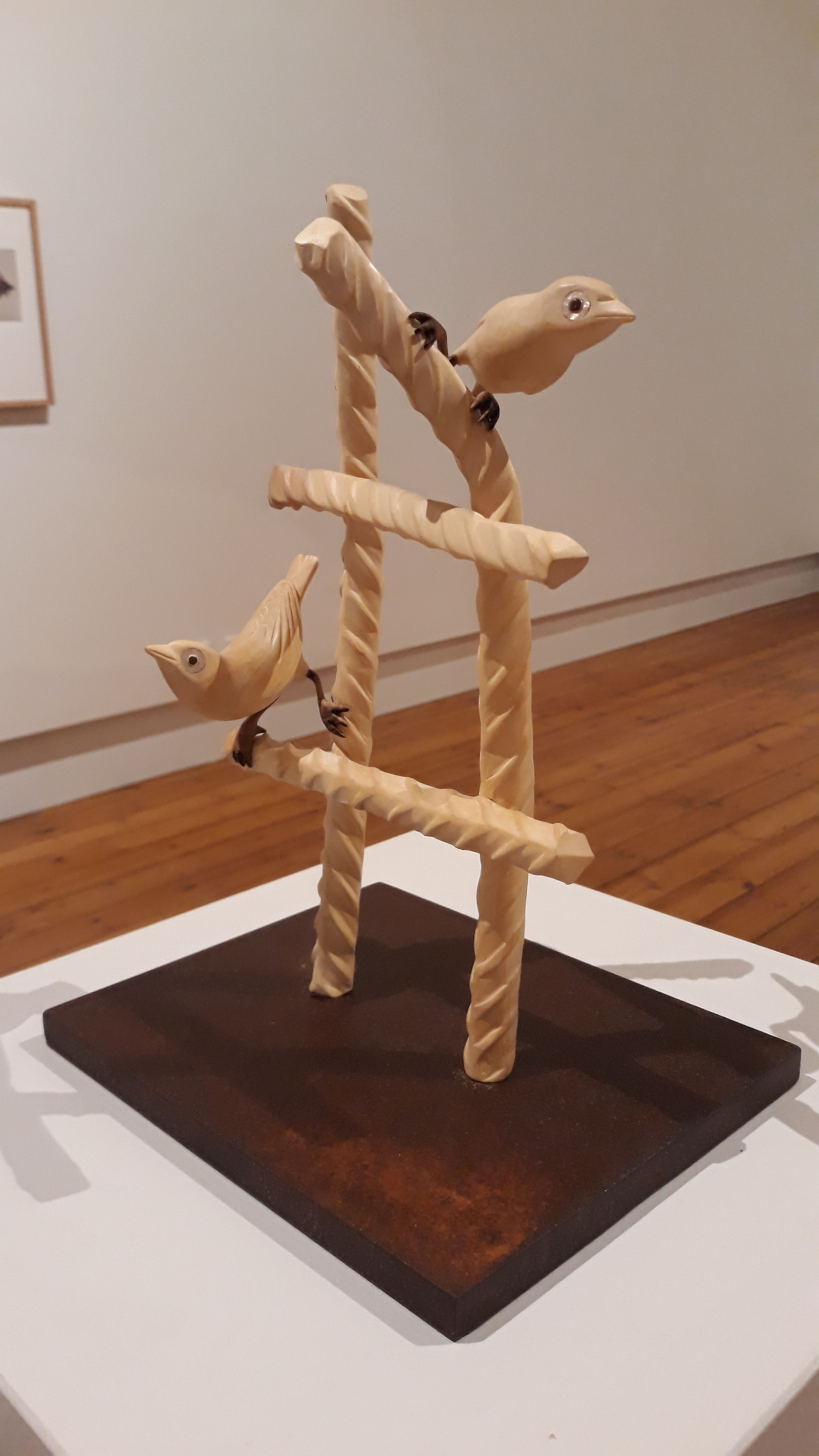
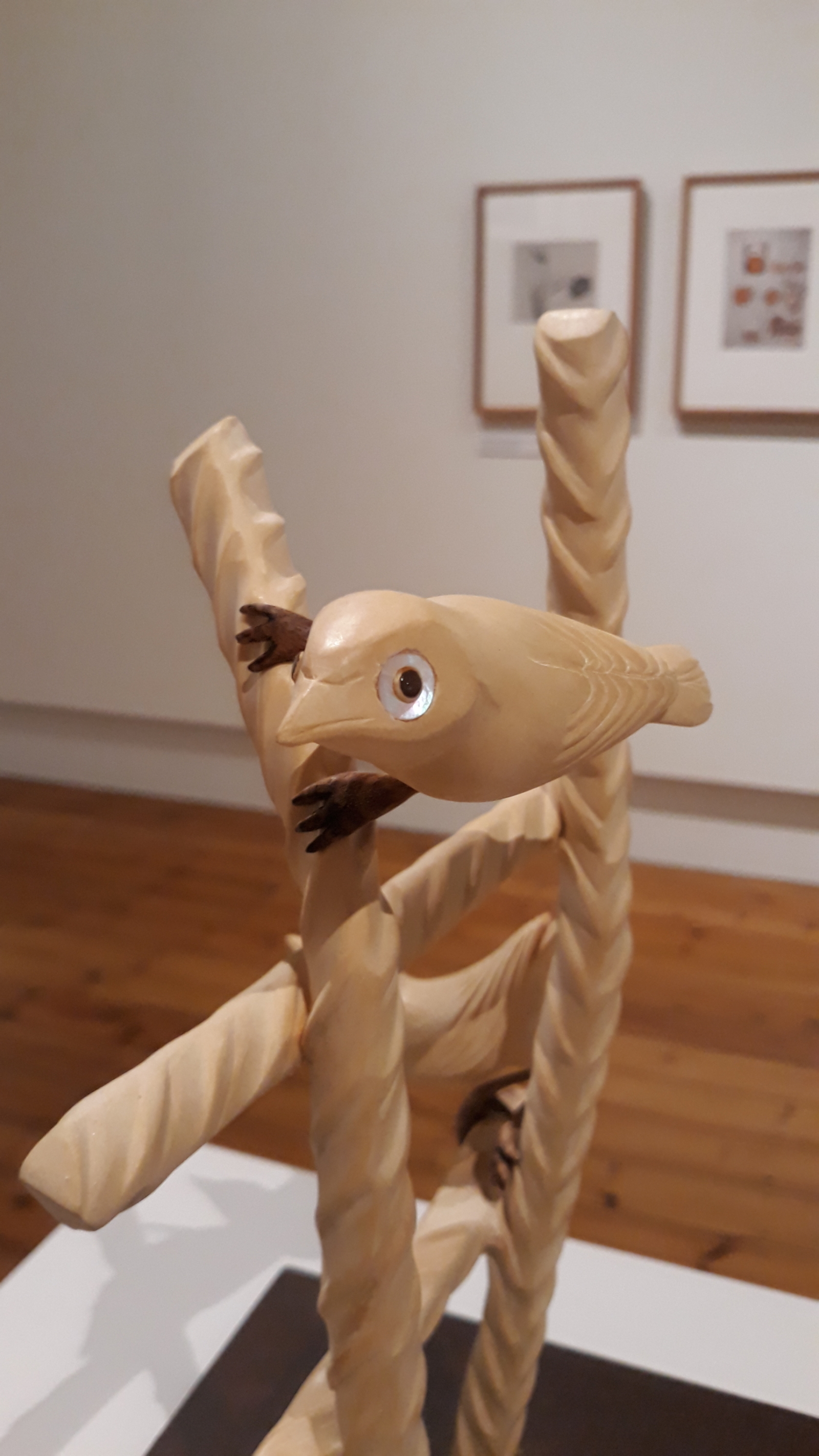
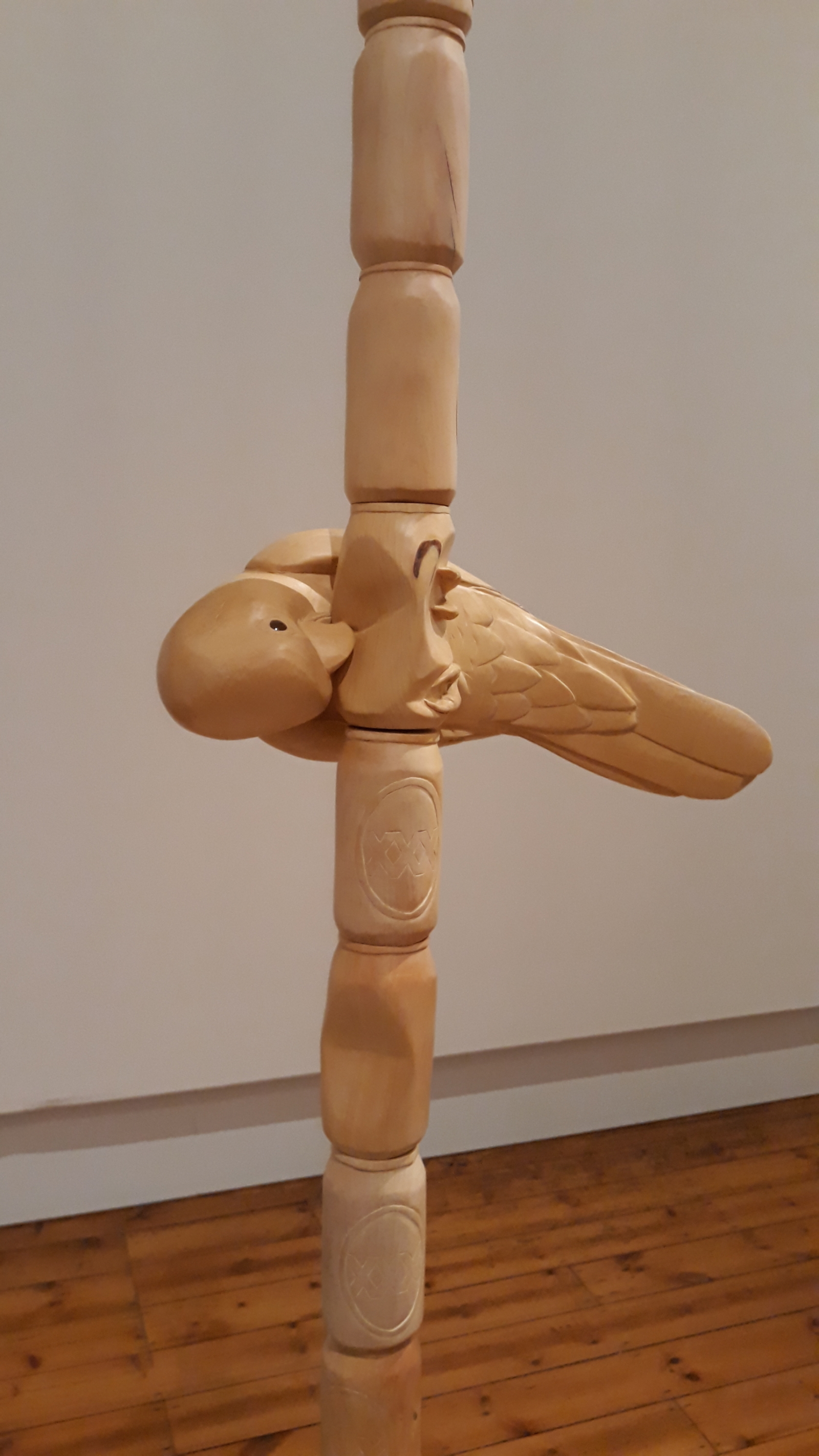
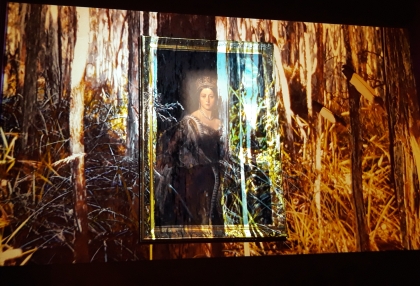
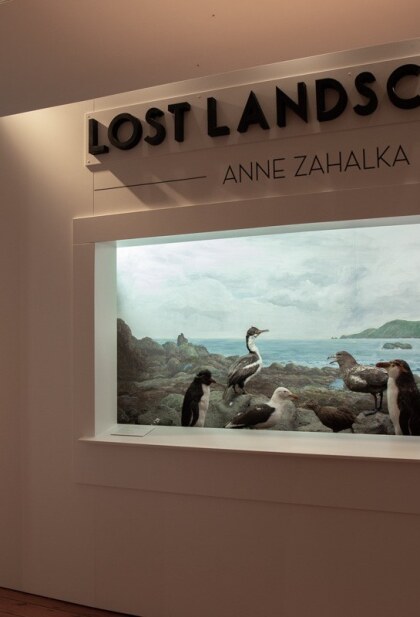
No Comments